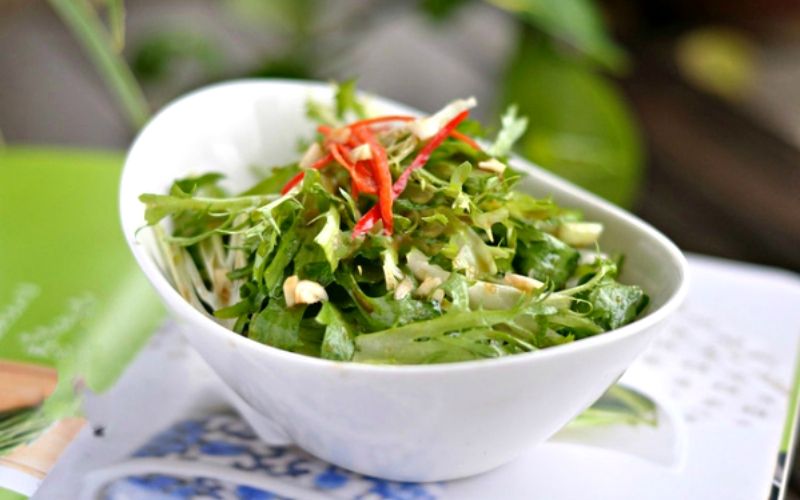Lai Chau is a province in Vietnam’s Northwest region, bordered by Yunnan province in China to the north, Dien Bien to the west and southwest, Lao Cai to the east, Yen Bai to the southeast, and Son La to the south. Beyond Sapa and Mai Chau, Lai Chau is the best place to visit in Vietnam for adventurers.
General Information
Lai Chau, with a land area of 9,068.7 square kilometers and a population of 370,135 people, occupies a critical strategic position in terms of national defense and security. When it comes to tourism potential, Lai Chau possesses not only the mysterious charm, the wild stunning beauty of rolling mountains, wild forests, gentle but violent streams, and the endless sound of the mountain and forest but also the diversity in cultural identities of ethnic groups, which is a characteristic of a Northern Province. This is an intriguing destination for your Vietnam eco-tour.
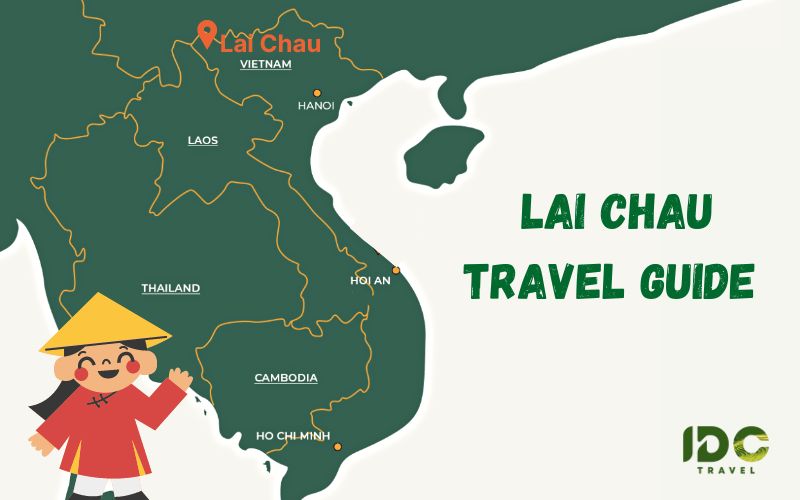
Lai Chau Location
Lai Chau is located about 400 kilometers southeast of Hanoi in a high mountainous region in Northwest Vietnam, north of the Da River. The terrain of Lai Chau is made up of mountain ranges that run from Northern West to Southern East. The highest peak is The Pu Sa Leng, which stands at 3096 meters. Furthermore, there are sloping mountains, springs, plateaus, hills, and valleys alternately.
Ethnic Minorities in Lai Chau
Lai Chau, like other Northern Provinces, has an ethnic minority population that makes for a colorful picture of cultural diversity. More than 400 thousand people from 20 ethnic groups live together, with the majority being Thai ethnic people, who number 131,822 and account for 34% of the total ethnic minorities. Furthermore, the Mong ethnic group comprises 22.30% (86,467 people), the Kinh ethnic group comprises 54,027 people (13.94%), the Dao ethnic group comprises 51,995 people (13.41%), the Ha Nhi ethnic group comprises 14,658 people (3.78%), and other ethnic minorities.
Because of the diversity of ethnic groups, Lai Chau is home to both tangible and intangible heritage items. Many examples include Thai and Mong ethnic people’s stilt houses, brocade weaving, ‘dan tinh’ (handmade gourd lutes), ‘hat then’ (then singing),’mua xoe’ (circle dance), and gong festivals. Lai Chau is also the site of many traditional festivals, including the Dao ethnic group’s ‘le cap sac’ (maturity ritual), the Mong ethnic group’s ‘le cau phuc’ (happiness praying), the Thai ethnic group’s circle dance and gong festival, and the Mong people’s traditional Tet holiday.
Lai Chau Weather & Best Time to Visit
The climate in Lai Chau is tropical monsoon, with hot days and cold nights. The wet season in Lai Châu is warm, muggy, and overcast, while the dry season is pleasant and mostly clear. Throughout the year, the temperature typically ranges from 46°F to 85°F, with temperatures rarely falling below 38°F or rising above 91°F.
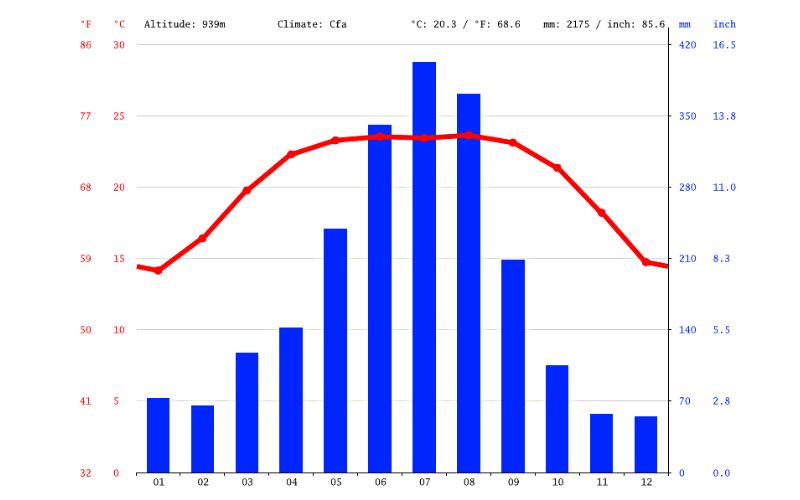
Lai Chau Weather
The climate in Lai Chau is tropical monsoon, with hot days and cold nights. The best seasons to visit Lai Chau are spring (February to April) and winter (December to February). Temperatures range from 21oC to 23oC throughout the year. The following is the yearly weather pattern:
- May to September: rainy season, high temperatures and humidity
- November to March: dry season, cold weather, low humidity
Given the climate and culture of the North West, the best time to visit Lai Chau is the same as the best time to visit the Northwest.
- Between September and October 10, look for Mu Cang Chai rice and Muong Than fields in the Than Uyen district.
- If you want to combine a tour of Lai Chau and Sapa, take the O Quy Ho pass, which connects the two districts.
- You should avoid the rainy season in the North West, especially when a storm or tropical depression is causing rain because the roads in the region are prone to landslides and flooding in rivers and streams at this time. Raising is extremely dangerous.
Getting to Lai Chau
By bus
You can take a local bus from Sapa to Lai Chau via Tram Ton Pass (a scenic ride). You can also take direct buses from Dien Bien, Son La, and Mu Cang Chai (Yen Bai) to Lai Cha. Lai Chau is about 500 kilometers from Hanoi. At the moment, approximately ten automakers operate on the Hanoi-Lai Chau route, with buses departing from My Dinh bus station. You can take a direct bus from Hanoi’s My Dinh or Giap Bat bus stations. It usually takes 7-12 hours, depending on the company and the bus route, stops, etc.
By motorbike
There are no motorbike rental places in Lai Chau, so if you did not bring a motorbike from Hanoi and still want to get to Lai Chau, a tip is to rent a motorbike in Sapa. Rather than taking a passenger car up to Lai Chau, take a bus or train to Lao Cai (Sapa), rent a motorbike, and then travel to Lai Chau.
Where to stay in Lai Chau
Although it is close to some popular tourist destinations such as Mu Cang Chai and Sapa, Lai Chau is now a place where few tourists stay overnight. This is most likely due to a lack of suitable accommodation in these areas, as well as the high standard of accommodation in Lai Chau.
Places to visit in Lai Chau
Lai Chau, located in the northwest of the country, is adjacent to the provinces of Lao Cai, Dien Bien, Son La, and Yen Bai, and has more than 20 ethnic groups. For many, Lai Chau appears to be a poor mountainous area, but for travelers, the great sites are unlikely to be missed.
Sin Ho Plateau
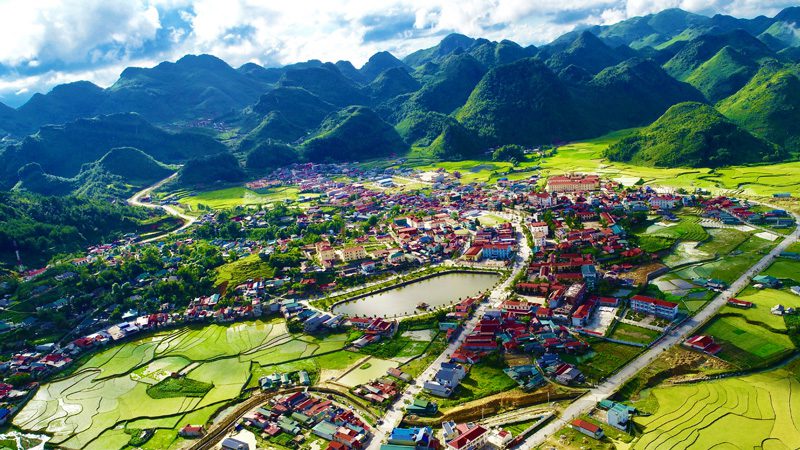
Sin Ho
A visit to Sin Ho village is truly an off-the-beaten-path adventure for all visitors on a tour of Northern Vietnam. Sin Ho village, located in Sin Ho district, Lai Chau Province, about 60 kilometers west of Lai Chau city, is known as “the roof of Lai Chau province” due to its altitude of 1,500 meters and year-round cool climate. Because of its unspoiled nature and the diverse cultures of local ethnic minorities, the village has attracted an increasing number of tourists in recent years.
Tourists will be drawn there by the abundance of stunning and picturesque landscapes such as O Rocky Mountain, Tien Cave, Pu Sam Cap cave ensemble, Sin Ho Stream, and so on. On weekends, you can visit the villages of Pu Dao, Ta Ghenh, Hoang Ho, Ta Phin, Phang Xo Lin, and other ethnic groups to learn more about their daily lives and unique customs, or you can integrate into highland markets. On your tour to Vietnam, you can have a great experience of various types of cure methods such as medicinal herb baths, massage, and point acupuncture services.
- Some items to bring should be suggested:
- It is possible to rent a motorcycle.
- Sleeping bags and a tent: in case you can’t find a place to stay.
- Water and food
- A raincoat and warm clothing are recommended because it can be chilly at night and early in the morning. The weather in Lai Chau is very unpredictable, and rains can occur quite frequently.
- The maps
O Quy Ho Pass
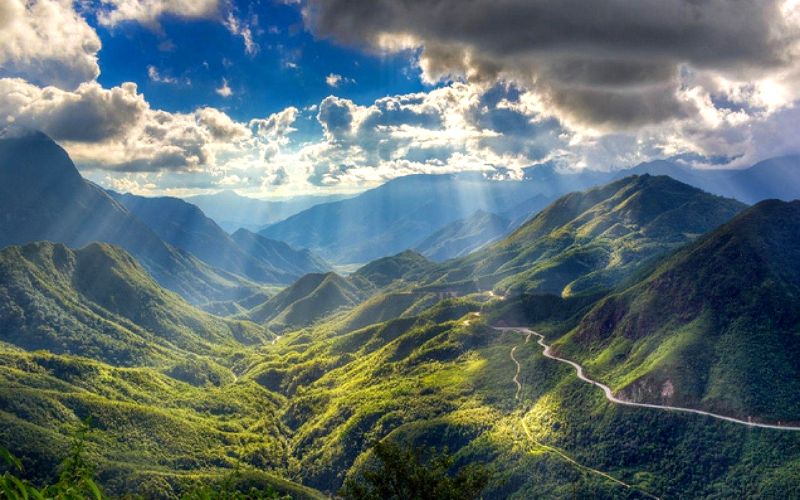
O Quy Ho Pass
One of the four great peaks of Vietnam’s northern mountain pass. Visitors to Lai Chau should not miss out on this opportunity. This bridge connects the two provinces of Lai Chau and Lao Cai. The O Quy Ho is not only Vietnam’s longest mountain pass, but it also has breathtaking scenery, making it a popular destination for adventurers, photographers, and nature lovers.
Pu Sam Cap Cave
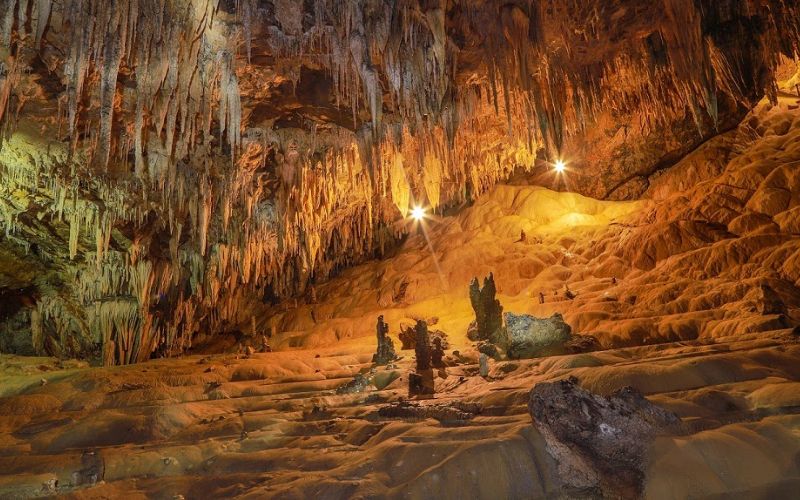
Pu Sam Cap Cave
The creator has bestowed many majestic mountain ranges, lush green forests, beautiful rivers, and streams on Lai Chau. Among these, Pu Sam Cam is the brightest tourism point, a must-see destination for a Northwest tour.
Pu Sam Cap cave, a tectonic-era limestone mountain range, is on the way to the Sin Ho plateau. This complex is made up of three large caves known as Thien Mon (Heaven Gate), Thien Duong (Paradise), and Thuy Tinh (Glass). Pu Sam Cap cave has drawn adventurous tourists with its wild and mysterious scenery.
Hoang Lien National Park
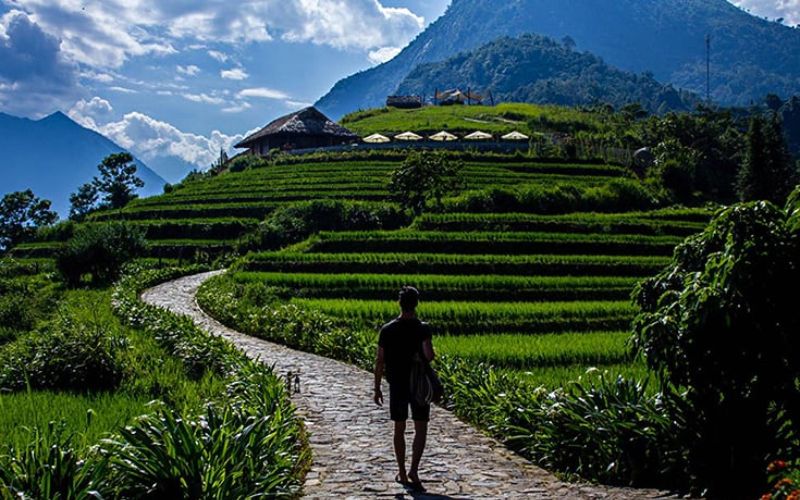
Hoang Lien National Park
Hoang Lien National Park is one of Vietnam’s most significant special-use forests for ecotourism and scientific research. The highest peak in Indochina, Fansipan, is located to the northwest of the Hoang Lien mountain range (at 3,143m). There are 2,024 plant species from 200 plant families, including 66 species in Vietnam’s Red Data Book, 32 rare species, and 11 endangered species such as blue cypress, bamboo, and red pine. Aside from that, there are 700 species of medicinal plants, including rhododendron, needle, cardamom, and others. Trekking and overnight camping trips are available, as well as a variety of other activities such as archery, bird watching, and learning to walk on stilts.
Muong Thanh Field
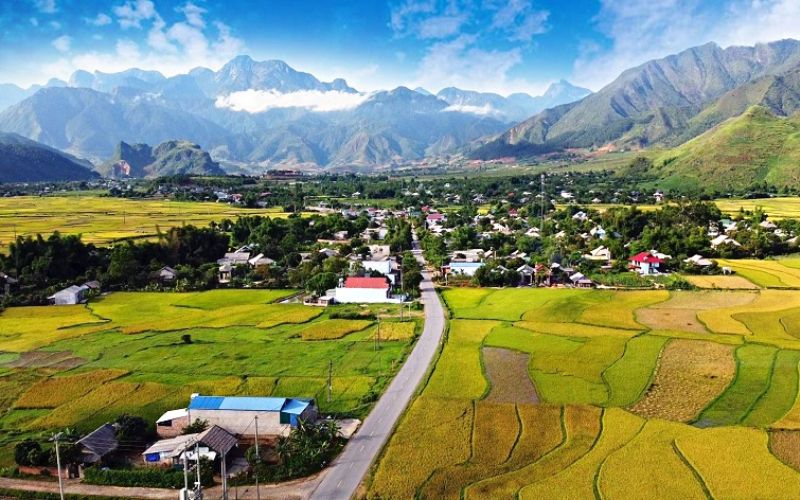
Muong Than Field
Northwesterners use the phrase “Nhat Thanh, Nhi Lo, Tam Than, Tu Tac” to describe the quartet fields’ best view in the area. One of them is Muong Thanh Field (Than Uyen district). Muong Thanh is beautiful at any time of year, but the season of blue water painting like a mirror of the sky and the golden ripe rice season are particularly appealing.
Tam Duong Market
Tam Duong is a town located between Sapa and Lai Chau. Tam Duong market is an example of a typical mountain market. The local market, located on National Highway 2 about halfway through town, is a must-see stop.
Tam Duong market, located at the foot of the Hoang Lien Son mountain range, is not only a trading place for local specialties and production tools, but also a meeting place for the Dao, Mong, Thai, Giay, and Lu ethnic minority people every Thursday and Sunday.
When shopping in this market, you will be surrounded by abundant locally-made products that reflect the local culture. Market-goers dressed in handcrafted colorful costumes sell locally made musical instruments such as flutes and pipes.
What to Eat in Lai Chau
Purple sticky rice
The Thai and Day women prepare this food with deft hands. The local women frequently claim to have their own cooking secrets, so the taste of this rice is unique and special, attracting visitors from near and far.
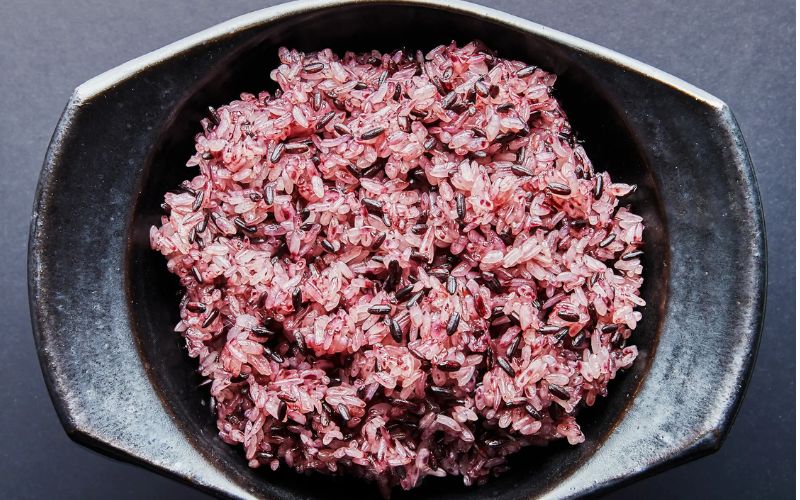
Purple sticky rice
Khau Cam (Hedyotis capitellata), the ingredient that gives the purple color, is combined with scented sticky rice that has been washed and soaked in water for 6 hours. This food is the reason that many tourists return to the area.
Smoked Pork
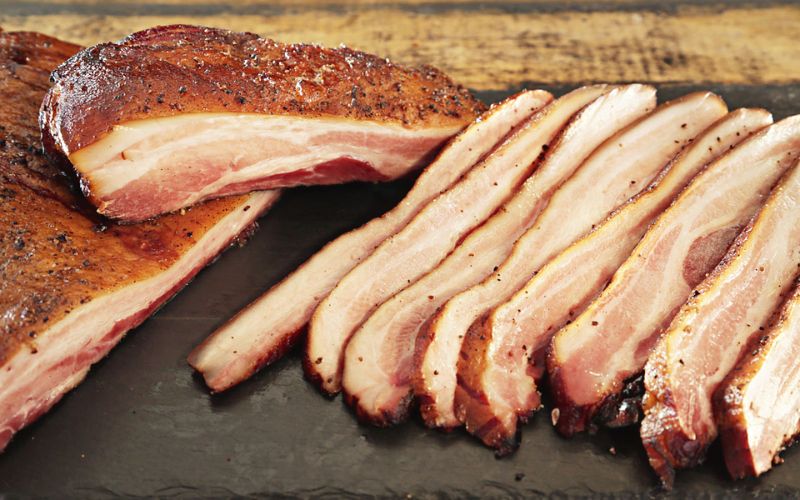
Smoked Pork
This food originated with the Pu Na people, but it has since spread to become the traditional food of some highland people. This dish has a distinct mountain flavor as well as an impressive taste.
This type of Jambon can only be made in the winter. If not, this will fail and you will be unable to eat. To make this dish, locals marinate the pork for 5-7 days before hanging it up in the kitchen and smoking it until the meat is dry and the fat has melted. Mac Khen is a common seasoning for this dish.
Diplazium esculentum Salad (nom rau don)
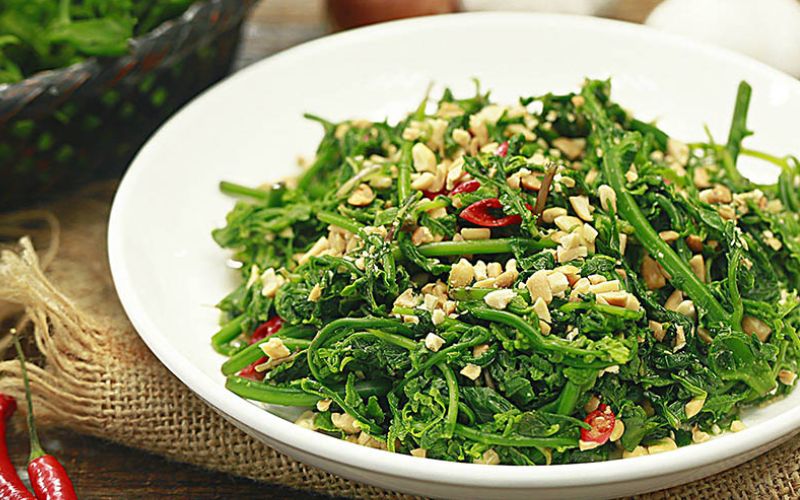
Nom rau don
This is a traditional Thai dish in Lai Chau. To make this salad, choose the freshest diplazium esculentum shoots, then clean and dry them in the sun. Then it will be placed in a ‘Cho’ pot for about 20 minutes to steam them and keep them green. After that, the food will be spiced with chili, lemon, ginger, and so on. When you eat the food, you will notice the sweet and buttery flavor of the sour and spicy spices.
Lettuce salad
Lettuce is a wild vegetable that grows abundantly in Lai Chau’s mountainous areas. Thai ethnic people enjoy preparing food from natural ingredients, and cilantro salad is one of them. Lettuce salad, which is not only fragrant but also sweet and sour, is a dish that keeps your meal from becoming monotonous.
Lon cap nach
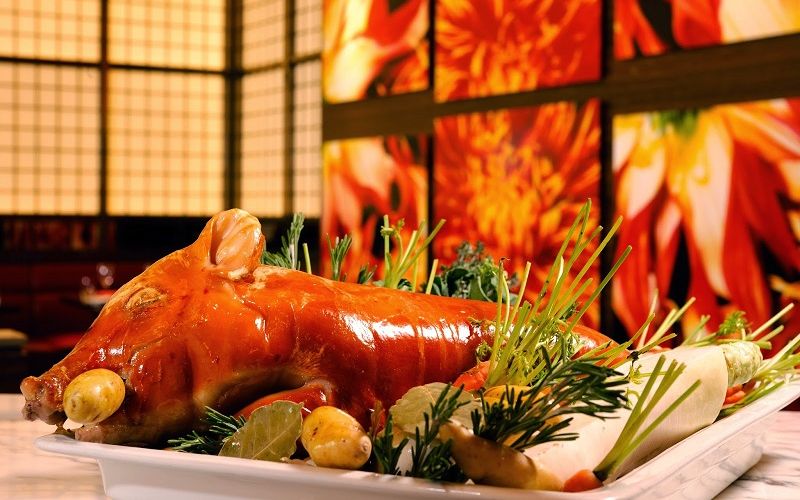
Lon cap nach quay -Grilled pork
“Lon Cap Nach” or “Lung Pig” is a pig species found only in the highlands, particularly in Lai Chau. They were raised in the forest and were left to fend for themselves. Because this species feeds primarily on the leaves, branches, and roots of trees in the forest, their meat is extremely sweet and low in fat.
We hope the information provided above is useful to you. Please contact us for more information, and start planning your adventure right away!

